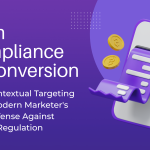In the rapidly evolving landscape of education, the integration of a robust Learning Management System (LMS) is critical to the success of hybrid learning environments in K-12 schools. As an educational leader or decision-maker, you must carefully assess the essential features that will support both teachers and students in this dynamic setting. From user-friendly interfaces to comprehensive analytics, selecting the right K-12 LMS can enhance the learning experience and drive academic achievement. This article will guide you through the key attributes to consider, ensuring that your institution is equipped with the tools necessary for a seamless and effective hybrid education journey.
Understanding the Role of a K-12 LMS in Hybrid Learning
Bridging Traditional and Digital Education
In the rapidly evolving landscape of K-12 education, a Learning Management System (LMS) serves as a pivotal bridge between traditional classroom teaching and digital learning environments. An LMS in a hybrid learning model is not merely a repository of resources, but rather a dynamic platform that supports diverse educational strategies. By integrating digital tools with face-to-face instruction, it enhances both teachers’ ability to deliver content and students’ capacity to absorb and interact with learning material.
Facilitating Personalized Learning
A key advantage of an LMS is its potential to tailor education to individual student needs. In hybrid learning settings, personalization becomes crucial in accommodating varied learning paces and styles. An LMS offers tools for tracking progress, setting individualized goals, and providing targeted feedback. This personalized approach helps educators identify and address specific challenges students may face, ultimately fostering a more inclusive and effective learning environment.
Enhancing Communication and Collaboration
Communication is a cornerstone of effective hybrid learning. An LMS facilitates seamless interaction between educators, students, and parents by offering features such as discussion boards, messaging, and video conferencing. These tools not only ensure that dialogue is continuous and constructive but also encourage collaboration among students. Engaging students in group projects or peer discussions through an LMS cultivates essential skills such as teamwork and problem-solving, which are critical for success beyond the classroom.
Streamlining Administrative Tasks
Administrative efficiency is another critical role of a K-12 LMS. Teachers can automate routine tasks such as grading, attendance tracking, and assignment distribution, thereby freeing up time to focus on teaching and engaging with students. Moreover, the centralized nature of an LMS ensures that educational content and administrative records are easily accessible and organized, reducing the administrative burden on educators and supporting a smoother operation of hybrid learning environments.
In essence, the role of an LMS in hybrid learning extends beyond technology; it is a transformative tool that enriches educational experiences while fostering a supportive and adaptive learning ecosystem.
Key Features to Look for in a K-12 LMS

User-Friendly Interface
A successful K-12 Learning Management System (LMS) should prioritize simplicity and intuitiveness in its design. An LMS with a user-friendly interface allows students, teachers, and administrators to navigate the system easily, minimizing the learning curve and maximizing engagement. Features such as a well-structured dashboard, clear navigation menus, and accessible icons can facilitate seamless interaction. When users are not bogged down by complicated processes, they can focus more on educational content and less on figuring out how to use the system.
Integrated Communication Tools
For hybrid learning environments, robust communication capabilities are essential. An effective K-12 LMS should offer integrated messaging systems, discussion forums, and video conferencing tools. These features promote collaborative learning by enabling real-time interactions between students and teachers, regardless of their physical location. Communication tools within the LMS not only support educational discourse but also foster a sense of community and connection among users, which is crucial for maintaining student motivation and engagement.
Comprehensive Data Analytics
Data analytics play a vital role in enhancing the learning experience by offering insights into student performance and progress. An LMS with comprehensive analytics features can track student activity, assess understanding, and provide detailed reports to educators. This data-driven approach enables teachers to identify learning gaps, tailor instruction, and offer personalized feedback. Moreover, analytics help school administrators make informed decisions regarding curriculum adjustments and resource allocation, ensuring an optimized educational environment.
Flexible Accessibility Options
Flexibility in accessibility is critical to cater to diverse learning needs and preferences. A K-12 LMS should support various devices and platforms, ensuring students can access learning materials from anywhere at any time. Additionally, the system should accommodate differentiated learning strategies by offering features such as multimedia content, customizable learning paths, and accessibility tools for students with disabilities. By providing flexible access, an LMS ensures that all students have equal opportunities to succeed, promoting an inclusive and equitable learning environment.
Enhancing Engagement and Collaboration in Hybrid Classrooms
- Use of Interactive Tools:
Incorporate virtual whiteboards, live quizzes, and polls to make learning active and engaging, both in-class and remotely. - Promote Student Participation:
Encourage interaction to transform passive learning into a two-way process, improving understanding and retention. - Support Collaborative Projects:
Enable group work with shared digital workspaces, communication tools, and file-sharing features to build teamwork skills. - Seamless Integration:
Ensure LMS supports video conferencing and real-time collaboration, regardless of student location. - Build a Learning Community:
Use forums and social learning tools to foster discussions, peer support, and knowledge sharing. - Personalized Learning Pathways:
Offer tailored learning experiences that meet individual student needs, making education more inclusive and effective.
Ensuring Accessibility and Inclusivity in K-12 Education
A strong K-12 LMS should focus on both accessibility and inclusivity. Accessibility means designing tools that support all students, including those with disabilities, through features like text-to-speech, screen reader support, and adjustable text sizes. Inclusivity goes further by offering flexible learning options such as videos, quizzes, and reading materials to suit different learning styles. Using Universal Design for Learning (UDL) principles helps create an environment where all students can engage, participate, and succeed. This approach ensures every learner feels supported and has equal access to quality education.
Conclusion
In conclusion, selecting the right Learning Management System (LMS) for a K-12 hybrid learning environment is crucial to achieving educational success. By prioritizing features such as user-friendly interfaces, robust integration capabilities, and comprehensive analytics, you can ensure a seamless experience for educators and students alike. Additionally, prioritizing accessibility and customization will cater to diverse learning needs, fostering an inclusive and adaptable educational space. Embracing these essential elements not only enhances teaching effectiveness but also empowers students to thrive in a flexible learning landscape. Your commitment to these features will pave the way for a successful and transformative hybrid learning experience.
Lynn Martelli is an editor at Readability. She received her MFA in Creative Writing from Antioch University and has worked as an editor for over 10 years. Lynn has edited a wide variety of books, including fiction, non-fiction, memoirs, and more. In her free time, Lynn enjoys reading, writing, and spending time with her family and friends.















